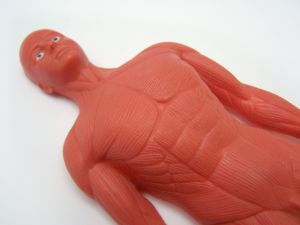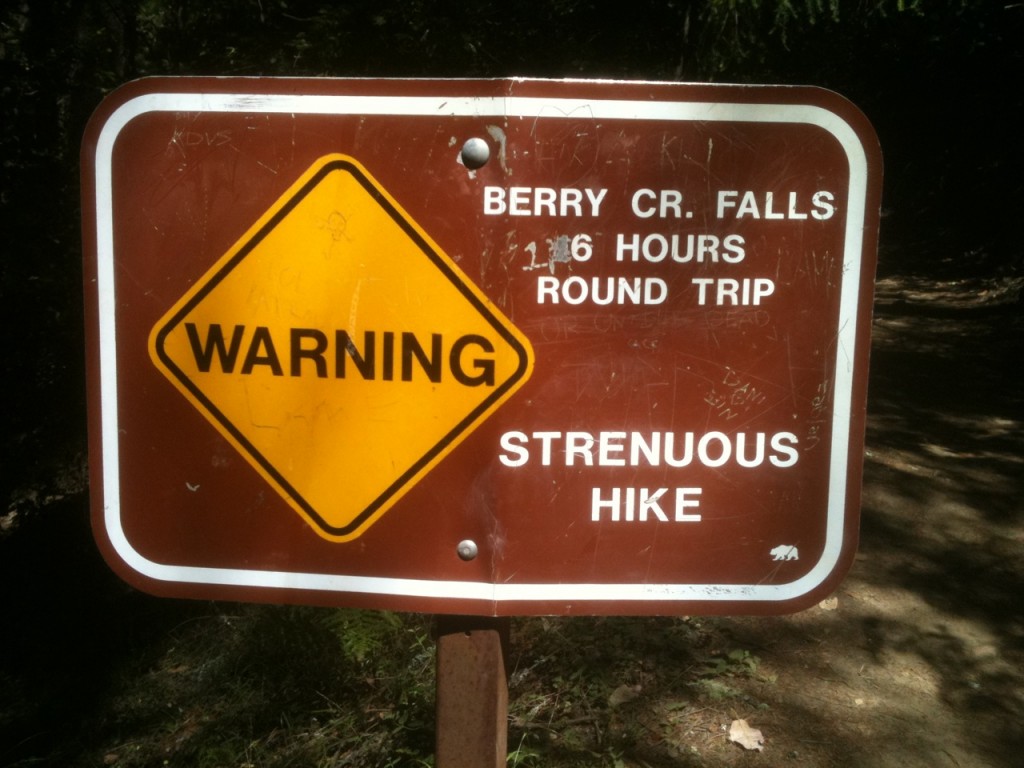In this article I want to talk about muscle soreness causes, should it be sought or avoided, and what to do to limit or alleviate it.
It is frequently referred to as DOMS or delayed onset muscle soreness. This is because the soreness usually doesn’t set in until about 24 hours after the workout. You train hard and wake up the next day sore. Although in certain cases soreness can happen much faster for particularly brutal or voluminous training.
 It is generally believed that the soreness is caused due to the trauma the muscles have taken. When you workout against resistance this causes micro tears in the muscle. You must allow for recovery so that these tears can be rebuilt and you come back bigger and/or stronger than before.
It is generally believed that the soreness is caused due to the trauma the muscles have taken. When you workout against resistance this causes micro tears in the muscle. You must allow for recovery so that these tears can be rebuilt and you come back bigger and/or stronger than before.
The Main Cause of Muscle Soreness
If you do something new, a new type of resistance training, or one you haven’t done in some time, your body is not acclimated to it. Being that people often go too hard too early, and I’m no different, this can result in massive soreness, the next few days in whatever muscles were worked.
Case in point for me is these past two weeks. I went back to a gymnastics class. In tumbling you use lots of muscle all over the body for stabilization and movement. And all the various jumping and leaping takes its toll on the legs. As this was my first day back in about two years and I didn’t really ease in my muscles were sore the next day or three.
Just at the point were I felt recovered from the soreness I end up in a 6 mile run. This works other leg muscles, most notably my calves, shins and feet. Walking normally becomes a chore the next couple days.
So I rest a bit more. Than my second gymnastics class comes around. At this point I can walk straight, but once I start jumping and bounding off the mat I realize my calves were not quite up to the task. The soreness comes back.
A glutton for punishment, I’m not done. (Really it wasn’t by choice instead something I needed to do for reasons I won’t get into here.) Less than two days later I set out on a 16 mile hike. According to this sign it was strenuous. I’m guessing it was talking about the length and not terrain as the trails weren’t bad at all.

In my mind I’m thinking how taxing is walking? Even if it is more than I’ve ever walked in one go and involves numerous up and down hill slopes. Well, let me tell you, four hours and fifty minutes of hiking gets to you when your legs want nothing more than to rest.
(As a side note I think this is an important aspect of why I train the way I do. So that I can jump into any field of endeavor and go at it. No hassles, just do it. Soreness be damned. To venture out on a “strenuous” hike without giving it much thought.)
It’s been two days now. This marks close to two weeks I haven’t been walking straight. I say this all to illustrate especially how new or untrained workouts will lead to muscle soreness, as well as how important recovery is. During this time I have not lifted weights much, which was my usual everyday training before all these extracurricular activities.
More Muscle Soreness Causes
Some people find that certain exercises almost always bring about soreness. For me squats almost always get my legs sore even if I do them regularly. This isn’t necessarily so sore that I can’t walk straight the next few days, but I do feel some soreness.
More volume tends to cause more soreness. While you can work up to just about any level of volume its important that you do just that. Work up to it. And if you want to have less soreness from your workouts than cutting the volume may be an important part of that.
It’s also been noted that the negative portion of any lift, for whatever reason results in more soreness than the positive.
The big questions is…
Is soreness a good or a bad thing?
There are those that seek soreness in their workouts. They look at it as if they aren’t sore the next day the didn’t work hard enough. And the more sore they end up the better the workout was. If you can’t walk straight then yes you are squatting hard enough. Been there, done that. Nowadays, I don’t know about you, but I use progress as my measure of success, not muscle soreness.
Muscle soreness can be a metric you look at but I would not use it as your gauge for how your training is going. Because the truth is you can become sore and not make an ounce of progress. Or you can go for without any soreness.
As a general rule I train in ways that do not get me sore. And if they do its only a little bit that doesn’t affect my daily life or my workout the next day. (After all how functional is your training if you can barely walk, and get called into an emergency situation.) For me these past two weeks were an acceptable anomaly to the routine.
Once again, go towards your goals, not for soreness. If you do find that the workouts you’re doing cause soreness, but you’re getting closer to your goal then that’s fine. But don’t seek soreness for soreness’ sake.
What to do for sore muscles?
Let’s say that you are sore, like I am right now. What do you do about it? As was stated the muscle is going to take time to repair. There is no way around it, it will take time. However you can do things that may speed up that recovery.
In order to repair, the muscles will need blood flow as this brings oxygen as well as other nutrition. Therefore you want to increase circulation to the area. This means exercising it more! This doesn’t mean repeating the same workout (although there are people who recommend that) but instead do something light for a period of time.
If you’re legs are sore from squats, walking, running or skipping rope could be a big help. The hiking actually seemed to help my legs and calves, during the first point, until it got to the point where it was too much.
If your shoulders or arms are sore, try swinging around light Indian clubs. You can use a light weight for many exercises for this reason.
Other ways to bring about more blood include manual manipulation or alternating hot and cold water treatments.
In addition your body needs the basics of proper nutrition and sleep to handle the job. Without these you won’t go far.
To recap you need to realize what brings about muscle soreness. For the most part this can be avoided or minimized in many situations. And when it does come about you can deal with it while still progressing further.

Comments
A couple things I’ve found research data about. First, there appears to be no relationship between DOMS and strength. In other words, it doesn’t cause a reduction in strength. That was a surprise to me.
Second, there is another hypothesis presented that makes more sense to me about where the pain comes from. A summary from Wikipedia, which was taken from a journal article. “Some research claims that DOMS is not caused by the pain from damaged muscle cells, but from the reinforcement process. The muscle responds to training by reinforcing itself … above its previous strength by increasing the size of muscle fibers. This reinforcement process causes the cells to swell in their compartment and put pressure on nerves and arteries, producing pain.”
This makes the most sense of all the hypotheses I’ve seen. Can’t be lactic acid because that dissipates in an hour. That’s pretty well-accepted. But the micro muscle-tear idea seems to be the same thing. If I was tearing my muscles, wouldn’t the soreness be present immediately, or at least within a couple hours? A cut or bruise is sore right away. Those don’t seem to be nothing, then peak a day or three later, like DOMS does. The adaptive swelling of fibers causing pressure and pain seems to make more sense to me.
Just tossing that out there. I don’t understand the science, but the logic was there. But, logic doesn’t work when complex natural systems are at play. It is interesting that there is still significant disagreement over the actual cause.
BTW, the best cure for general muscle soreness for me is 30-40 reps of easy clean and jerk, maybe 95-110lb. All singles, set the bar down between each rep, take 3+ deep breaths, then do another. Similar to breathing squats. This warms and loosens me up all over. I feel great fingertips to toes.
I find that the best treatment for brutal DOMS is some sort of mild full body movement.
I’ve used Turkish Get Ups with 24 kg for five reps per side. In good form, this tends to loosen tight areas and limber up the shoulders and hips like nothing else without requiring strenuous effort on my part.
When I had no access to weights I often did 10-20 slow repetitions of hindu pushups and close stance bodyweight squats followed by a minute of bridging. I really focused on stretching each sore area and freeing the joints. Doing these three exercises daily rehabilitated me from months of unbalanced development and injury.
I highly recommend DOMS sufferers to pump through the discomfort, so long as their movement of choice is 1. full body, 2. relatively easy, and 3. slow.
Timely, Logan. I woke up this morning after a particularly good squat workout yesterday and my quads have been screaming at me all day. A light run may be in order.
Thank you for the article.
Good article and very interesting. I am always looking for the simplest way to do anything. Exercise is no different. I have been avoiding muscle soreness for years and I seem to be making progress. Now, we must continue to get this information out to the masses so they are more interested in exercise versus avoiding it.
Great article, I haven’t seen much on this subject. I’m 42 and I’m having to do a heavy day on each weekend with compound exercises (typically deadlifts and pullups supplemented by lunges and tricep extensions, for example).
That’s the only day I have time to work out, with the exception of some quick KB work or walking during the week. So I accept that I have to be sore for the first couple of days each week, but I do need to try some of these ‘recovery’ techniques to see how that works.
I have found that a foam roller helps some.
Pingback: Recovery from Workouts